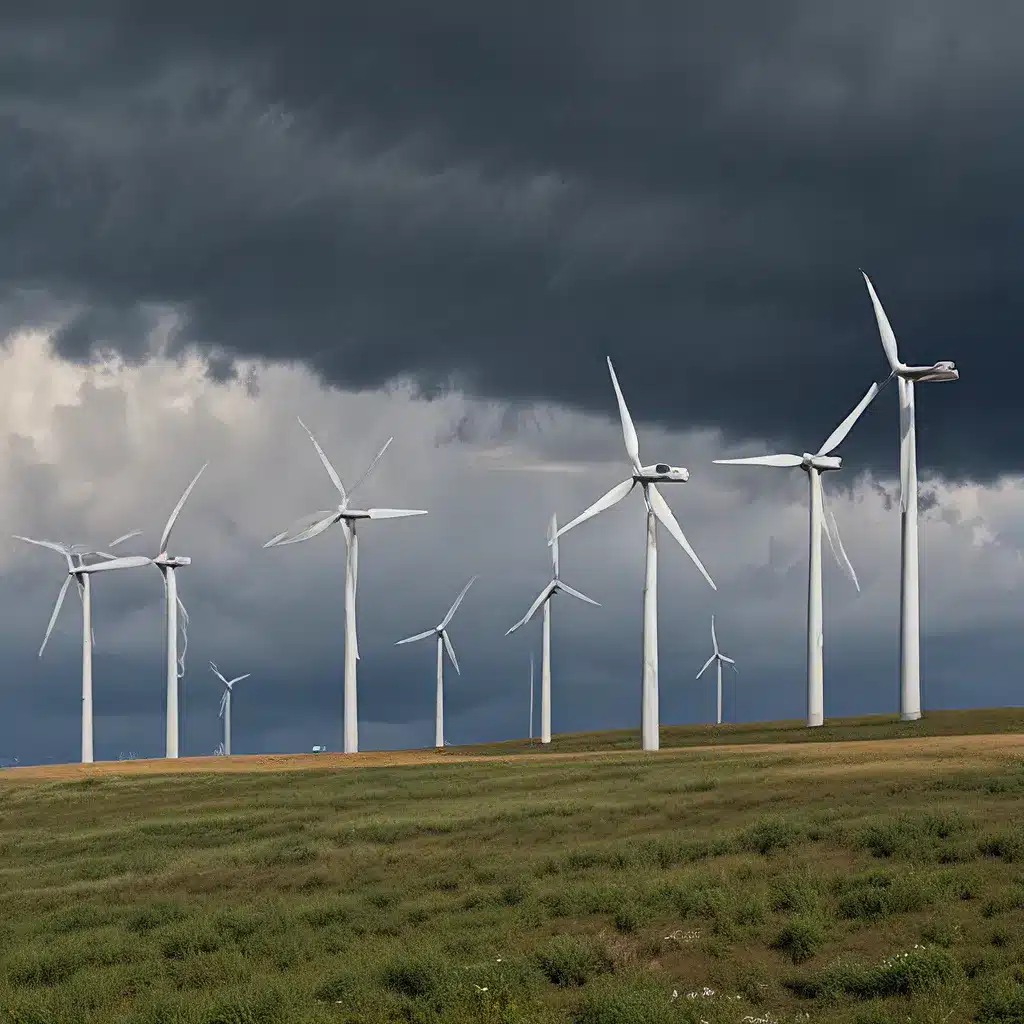
Harnessing the Power of Renewable Energy for a Resilient Future
As I sit here, watching the news unfold about yet another extreme weather event wreaking havoc across the country, I can’t help but feel a renewed sense of urgency when it comes to renewable energy solutions. Time and time again, we’ve seen how our traditional fossil fuel-based power grid crumbles under the strain of natural disasters, leaving millions without electricity and the basic necessities we so often take for granted.
But you know what? I believe the answer lies in the very renewable energy sources that are transforming the way we power our world. Solar, wind, and hydroelectric power have the potential to not only reduce our carbon footprint, but also build a more resilient and reliable electricity grid – one that can withstand the ever-increasing challenges posed by climate change.
According to the Center for American Progress, renewable energy is the key to creating a more resilient and reliable electricity grid. By diversifying our energy sources and decentralizing the grid, we can reduce the risk of widespread outages and improve our ability to bounce back from disasters.
Just imagine a world where your home or business is powered by a rooftop solar array or a community-owned wind farm, rather than relying on a centralized power plant that’s vulnerable to a single point of failure. This kind of distributed generation not only makes our energy system more resilient, but also empowers individuals and communities to take control of their own power supply.
Lessons from the Texas Freeze: Building a Stronger, Greener Grid
The recent Texas energy crisis is a prime example of why we need to rethink the way we approach energy infrastructure. As the World Resources Institute (WRI) points out, the extreme winter storm that left millions of Texans without power for days exposed the glaring weaknesses in the state’s electricity grid – weaknesses that could have been mitigated with a greater reliance on renewable energy sources.
One of the key lessons from this crisis is the importance of diversifying our energy mix. When the natural gas pipelines froze and the power plants went offline, the state’s heavy dependence on fossil fuels left it vulnerable to a complete system failure. In contrast, renewable energy sources like wind and solar tend to be more resilient to extreme weather, as they are less reliant on a centralized infrastructure that can be disrupted.
Another crucial lesson is the need for better weatherization and winterization of our energy infrastructure. By insulating and protecting power plants, pipelines, and other critical components, we can reduce the risk of outages during extreme cold snaps or heat waves. This is an area where renewable energy often has an advantage, as many solar and wind installations are designed to withstand a wide range of weather conditions.
The Resilience Advantage of Renewable Energy
As I dive deeper into this topic, I’m struck by the many ways that renewable energy can enhance the resilience of our power grid. Let’s take a closer look at some of the key benefits:
Distributed Generation: By decentralizing our power supply through rooftop solar, community wind farms, and other distributed energy sources, we can reduce the risk of widespread outages caused by a single point of failure in the grid.
Fuel Diversity: Renewable energy sources like solar, wind, and hydroelectric are not subject to the same supply chain disruptions or price volatility that can plague fossil fuels, providing a more stable and reliable energy supply.
Disaster Resistance: Many renewable energy technologies are inherently more resilient to extreme weather events, such as hurricanes, floods, and wildfires, which can cripple traditional power plants and transmission lines.
Microgrid Integration: By integrating renewable energy into microgrids – localized, self-sufficient power grids – we can create islands of energy resilience that can operate independently from the larger grid during outages.
Adaptability: As our energy needs and environmental conditions continue to evolve, renewable energy solutions are often more flexible and adaptable than traditional fossil fuel infrastructure, which can be costly and difficult to modify.
According to the Union of Concerned Scientists, the benefits of renewable energy extend far beyond just environmental sustainability – they also include improved public health, job creation, and cost savings for consumers. And when you factor in the resilience advantages, it becomes clear that investing in renewable energy is not just a smart move for the planet, but also a strategic investment in our energy future.
Powering Through the Storms with Renewable Energy
As I reflect on the increasing frequency and intensity of natural disasters, I can’t help but feel a sense of urgency and optimism about the role that renewable energy can play in building a more resilient and reliable power grid. Sure, there may still be some skeptics and naysayers out there, but the evidence is simply overwhelming: renewable energy is the key to weathering the storm and ensuring that our communities have the power they need, even in the face of the most extreme challenges.
So, what are we waiting for? It’s time to embrace the power of renewable energy and transform our energy landscape into one that is sustainable, resilient, and empowering for all. And hey, if you’re looking for a great place to start, why not check out Firewinder – they’ve got some pretty awesome renewable energy solutions that can help power your home or business and keep the lights on**, no matter what Mother Nature throws our way.

